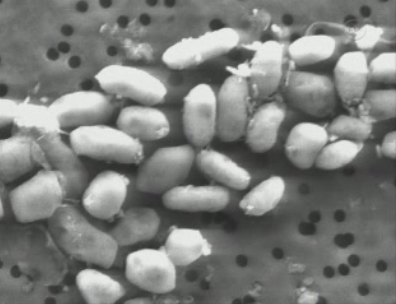 |
| Wolfe-Simon, Felisa. "GFAJ-1". 2/4/2016 via commons.wikimedia.org. Creative Commons Attribution 2.0 Generic. |
While the image might not immediately send a shiver down your spine or ignite your passion for bacteria, Felisa Wolfe-Simon had a different perspective.
The controversy began when Wolfe-Simon and her team began to study organisms in Mono Lake in California. Initially, the study set out to prove that there was an existing type of bacterium that could not only live, but thrive on an element other than the common six: carbon, nitrogen, oxygen, hydrogen, sulfur and phosphorus.
After conducting studies laced with errors, Wolfe-Simon published an article to the magazine Science that concluded that the bacterium were able to function with negligible levels of phosphorus, whilst using arsenic as their main component of life. In publishing the text, Wolfe-Simon sparked a gargantuan backlash from within the science community.
Prior to the publication of the text in Science, NASA held a press conference dedicated to celebrating the discovery, marking it as one of the most significant studies regarding the possibility of extraterrestrial life.
Before oppositions to the data arose, the science world rejoiced in the limitless number of possibilities that had been opened up. Unfortunately, within 48 hours of the original publication, biologists, professors and doctors alike began to publish their own thoughts on the topic. For Wolfe-Simon and her team, this is when shit hit the fan.
No comments:
Post a Comment